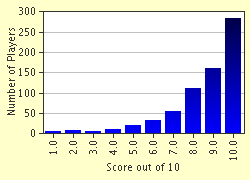Quiz Answer Key and Fun Facts
1. In the 1800 presidential election, Thomas Jefferson and Aaron Burr tied for first place, throwing the election into the House of Representatives for a tie-breaking vote. However, after 35 votes over six days they were still tied! Who finally became President?
2. In the 1824 presidential election, Andrew Jackson won the popular vote, but lost the subsequent Electoral College vote. In addition, none of the four Presidential candidates received an electoral majority. Who finally became President?
3. In the 1872 presidential election, candidate Horace Greeley died between Election Day and the meeting of the Electors. Who finally became President?
4. In the 1876 presidential election, Democratic candidate Samuel J. Tilden won the popular vote, but initially both he and Republican Rutherford B. Hayes were short in the electoral votes needed to win the presidency. Competing sets of electors from four states could swing the results, depending on who was certified. This deadlock was finally decided by a commission established by Congress. Who finally became President?
5. In the 1888 presidential election, Grover Cleveland won the popular vote, but lost the subsequent Electoral College vote. Who finally became President?
6. In the 1956 presidential election, a defecting Democratic Elector from Alabama cast a vote in the Electoral College for Walter B. Jones instead of for the Democratic nominee Adlai E. Stevenson. Who finally became President?
7. In the 1968 presidential election there were three major contenders: Richard Nixon, Hubert Humphrey, and George Wallace. Nixon and Humphrey tied with 43 percent of the direct vote and Wallace had 13.5 percent. Who finally became President?
8. In the 1972 presidential election, a defecting Republican Elector from Virginia cast a vote in the Electoral College for Libertarian candidate Dr. John Hospers. Who finally became President?
9. In the 1976 presidential election, a defecting Republican Elector from Washington (state) cast a vote in the Electoral College for Ronald Reagan. Who finally became President?
10. In the 1988 presidential election, a defecting Democratic Elector from West Virginia cast a presidential vote in the Electoral College for Lloyd Bentsen. Who finally became President?
Source: Author
root17
This quiz was reviewed by FunTrivia editor
bloomsby before going online.
Any errors found in FunTrivia content are routinely corrected through our feedback system.

